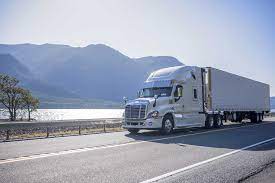Transportation Services: Connecting People and Places
Transportation services play a vital role in connecting people and places, facilitating the movement of individuals, goods, and ideas across cities, countries, and continents. From bustling urban centres to remote rural areas, efficient transportation services are essential for economic growth, social cohesion, and environmental sustainability.
The Importance of Reliable Transportation
Reliable transportation services are the lifeblood of modern society. They enable commuters to reach their workplaces, students to attend schools, patients to access healthcare facilities, and businesses to transport goods to markets. Whether it’s buses, trains, taxis, or planes, a well-functioning transportation network is crucial for fostering mobility and connectivity.
Sustainable Transport Solutions
In an era of increasing environmental awareness, sustainable transport solutions are gaining prominence. Public transportation systems powered by clean energy sources such as electricity or biofuels help reduce carbon emissions and alleviate traffic congestion. Cycling lanes and pedestrian-friendly infrastructure promote active lifestyles while reducing reliance on fossil fuel-powered vehicles.
Technological Advancements in Transportation
The digital revolution has transformed the way we access transportation services. Ride-hailing apps allow passengers to book rides at their fingertips, while real-time tracking systems provide up-to-date information on public transport schedules. Autonomous vehicles promise a future where driverless cars navigate roads with precision and safety.
Challenges in Transportation Sector
Despite advances in transportation technology, challenges persist in ensuring equitable access to transportation services for all members of society. Inadequate infrastructure in rural areas, high costs of private car ownership, and limited options for people with disabilities are issues that require attention from policymakers and service providers.
The Future of Transportation Services
As we look towards the future, innovation will continue to shape the landscape of transportation services. From hyperloop trains that promise ultra-fast travel times to electric scooters that offer convenient last-mile solutions in urban areas, the possibilities are endless. By embracing sustainable practices and inclusive design principles, we can build a transportation system that serves everyone equitably.
Exploring Public Transport Options in [Specific City]
Discounts and Special Fares for Regular Commuters: What You Need to Know
4. Real
- 1. How can I book a taxi or private hire vehicle?
- 2. What are the available public transportation options in [specific city]?
- 3. Are there any discounts or special fares for regular commuters?
- 4. How do I track the arrival time of buses or trains in real-time?
- 5. What accessibility features are provided for passengers with disabilities?
1. How can I book a taxi or private hire vehicle?
To book a taxi or private hire vehicle, you can typically do so through various methods depending on the service provider. Many taxi companies offer online booking platforms on their websites or mobile apps, allowing you to input your pick-up location, destination, and desired time for the journey. Alternatively, you can call a taxi company directly to make a booking over the phone. Private hire vehicles often require advance booking through their designated booking offices or online portals. It’s advisable to check with the specific taxi or private hire company for their preferred booking methods and any additional requirements they may have in place.
2. What are the available public transportation options in [specific city]?
When seeking information on transportation services in a specific city, a common question that arises is, “What are the available public transportation options in [specific city]?” Understanding the public transport network in a city is essential for residents and visitors alike to navigate efficiently and sustainably. From buses and trams to trains and ferries, knowing the available public transportation options can help individuals plan their journeys, reduce reliance on private vehicles, and contribute to a more connected and environmentally friendly urban environment.
3. Are there any discounts or special fares for regular commuters?
Regular commuters often inquire about discounts or special fares offered by transportation services to make their daily journeys more cost-effective. Many transport providers recognise the loyalty of frequent travellers and may offer discounted rates, season tickets, or travel passes to incentivise regular ridership. These special offers not only benefit commuters by reducing their transportation expenses but also contribute to promoting sustainable modes of travel and easing congestion on roads and public transport networks. It’s advisable for commuters to inquire with their local transport authorities or service providers about any available discounts tailored for regular passengers to make their daily commutes more affordable and convenient.
4. How do I track the arrival time of buses or trains in real-time?
To track the real-time arrival time of buses or trains, passengers can utilise various digital tools and applications provided by transportation agencies or third-party developers. These tools often use GPS technology to provide accurate updates on the location and estimated arrival time of public transport vehicles. By accessing these platforms through mobile apps or websites, commuters can plan their journeys more efficiently, stay informed about delays or schedule changes, and make informed decisions about their travel routes. Embracing such technology enhances the overall passenger experience and contributes to a smoother and more predictable transportation service.
5. What accessibility features are provided for passengers with disabilities?
Ensuring accessibility for passengers with disabilities is a crucial aspect of transportation services. To address the needs of all travellers, various accessibility features are often provided, such as wheelchair ramps or lifts on buses and trains, priority seating areas, audio and visual announcements for the visually impaired, and tactile paving for navigation. Additionally, some transport services offer staff training to assist passengers with disabilities and ensure a safe and comfortable journey for all. By implementing these accessibility features, transportation providers strive to create an inclusive environment where everyone can travel with dignity and independence.



